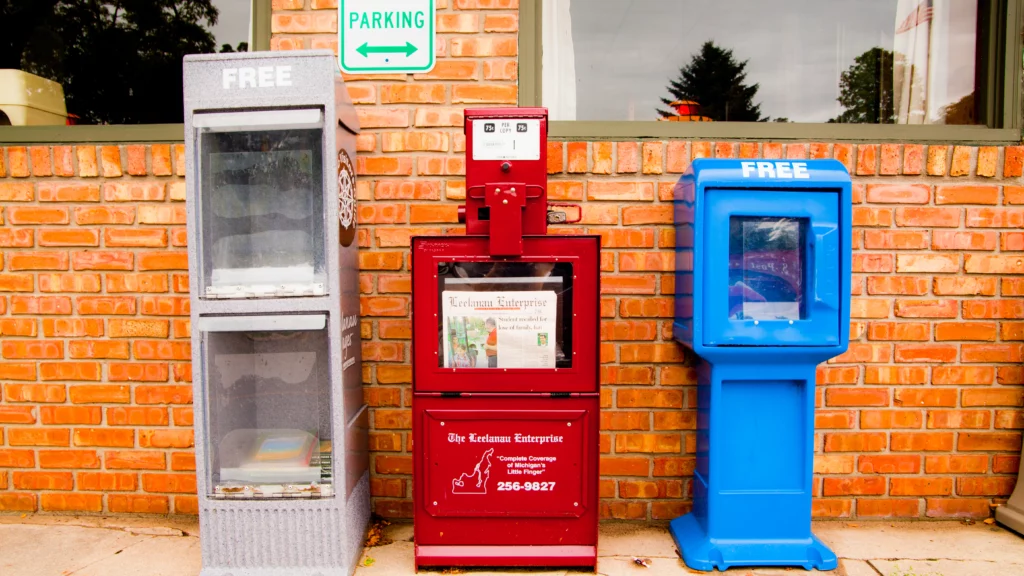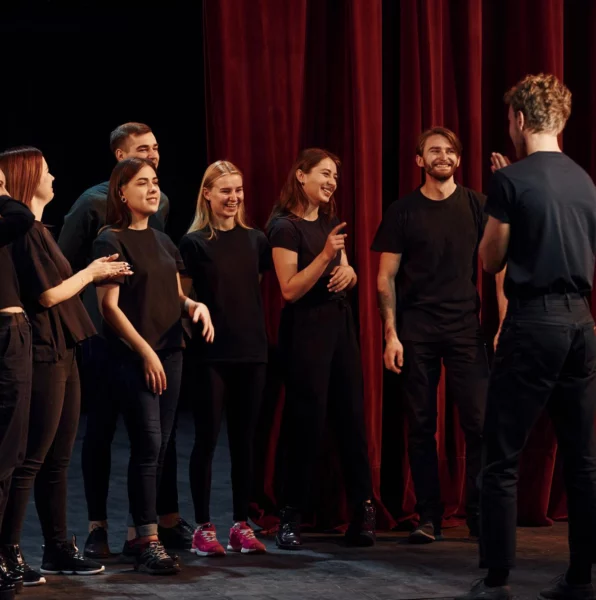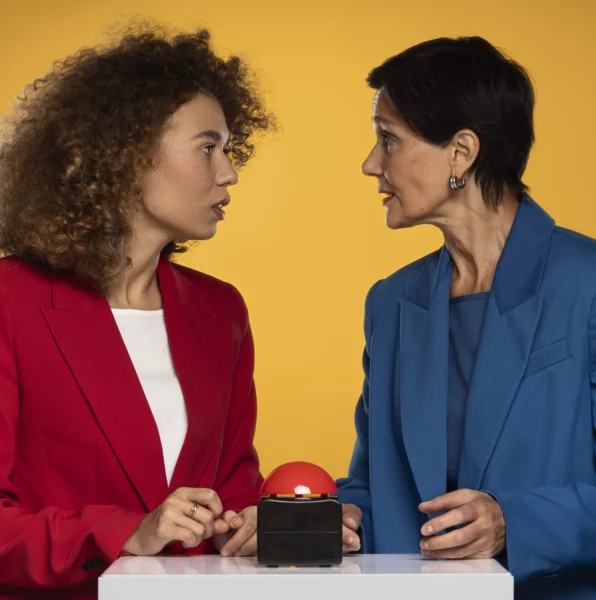The „Superheroes against Superbugs“ project aims to raise awareness of the urgent global health threat posed by microorganisms that are resistant to the effects of antimicrobial drugs. Project leader Sarah Iqbal talks about why the problem is particularly urgent in India and how science communication in India has developed over the last five years.
“The language diversity in India presents a complex challenge”
Ms Iqbal, the ”Superheroes Against Superbugs” project aims to educate the public in India about antimicrobial resistance. Why did you see the need for this project?
The project was started almost five years ago. At that time, antimicrobial resistance as a health problem wasn’t well-known, not only among the public but also among the scientific and medical communities in the country. Antimicrobial resistance is the ability of microorganisms to resist the effects of antimicrobial drugs such as antibiotics, and it poses a significant threat to countries such as India due to high population density and inadequate infection control measures. It has been named by WHO as one of the top ten global health threats of the century, and it, like any other infectious disease, knows no boundaries. According to a study in 2022, Antimicrobial resistance causes more death than HIV and malaria. For this reason, we felt that it’s an important area for us to talk about. The genesis of the project was a public discussion on antimicrobial resistance that we organised at the DBT Wellcome Trust India Alliance, where I was previously based. It’s an independent charity that funds biomedical science in India. It was there that I realised how unaware people were that something as big, yet invisible, as antimicrobial resistance was lurking with a potential impact on everyone. This made us think that we need to raise more awareness about the problem. At the same time, we realized that communicating the concept of antimicrobial resistance is not easy because it’s not a disease like HIV-AIDS or cancer.
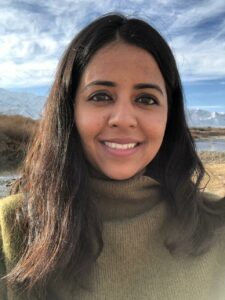
What is the challenge in communicating about antimicrobial resistance?
We recognised the need for creativity and innovative thinking to discuss antibiotics without spreading misinformation. Because one of the key messages that people sometimes take away from antimicrobial resistance is that we are becoming resistant to antibiotics rather than the bacteria. So, we have to be very careful how we talk about antimicrobial resistance, particularly in a country like India where we have both the problem, access to healthcare and the overuse of antibiotics. Because you can actually go to any pharmacy in the country and buy antibiotics over the counter without a doctor’s prescription. We don’t also want to make access to antibiotics difficult, but at the same time, it should not be so easy.
Over time, we’ve learned a lot about how to talk about antimicrobial resistance and what not to say. For example, we take care not to villainise antibiotics while emphasising that irresponsible use is the root cause of antimicrobial resistance.
The main focus of the projects lies on workshops you give in schools. How did you prepare to tackle this challenge of communicating especially with young people?
We had two challenges to address. First, we needed to make antimicrobial resistance interesting and appealing to young people. Second, we had to work with young people from different socioeconomic and cultural backgrounds. To make antimicrobial resistance interesting, we took a hands-on approach. We organized workshops where we explored microbiology, explained the concept of bacteria, and engaged participants in activities related to evolution and gene transfer. We made it interactive and conveyed the concepts through practical experiences rather than lectures. Once they understood the basic microbiology concepts, we introduced the problem of antimicrobial resistance and how bacteria are becoming resistant to drugs. We also framed the workshops as an opportunity for participants to become “Superheroes Against Superbugs”, which intrigued them, because everybody wants to be a superhero and change the world.
A characteristic feature of the workshops are the grassroot comics, with which the children can draw their ideas and thoughts on the topic of antimicrobial resistance. Why did you choose this tool?
Grassroots comics is an approach developed by Sharad Sharma, a journalist and artist with whom we collaborated on this project. Due to their unassuming yet visually appealing nature, grassroots comics are an excellent tool for increasing public awareness, and facilitating inclusive and participatory community dialogue on wide range issues. They only require A4 sheets and black pen making it a very cost-effective medium which is an important tool in a country like India. In our workshop, grassroots comics allows the participants to share their newly gained understanding of antimicrobial resistance and to propose solutions from their perspectives as a visual narrative. Additionally, it allows anyone to tell a personal story, which helps to make it accessible to everyone.
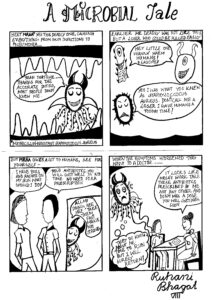
In the last years you have broadened the focus of the target groups you want to reach with the project, why?
Although we still deal mainly with young people, we have realised that we need to reach a broader audience to address this issue. We want to target other stakeholders as well, for example government representatives, medical professionals and the pharmacy community, through our engagement with young people as well as more directly.
Through which channels do you mainly communicate about the project?
Until recently, we did not have the resources to manage social media sufficiently, because the project is run by volunteers who have day jobs and other commitments. However, we have a Facebook account, a Twitter account, and we recently started an Instagram account. We realised that many young people in India are active on Instagram, so we expanded our presence to reach them. While we recognise the importance of social media, we also need to balance our efforts with offline events and projects, which require significant time and resources.
In 2018, you published an article in Nature in which you mentioned the need to amplify the voice of Indian science. Do you think science communication has improved in the last five years?
In the past couple of years, I have noticed an increase in voices discussing science on various platforms, both online and offline. There are more dialogues and discussions happening around science, and it’s not just limited to government voices. The COVID-19 pandemic played a significant role in bringing the spotlight back on scientific research. However, government
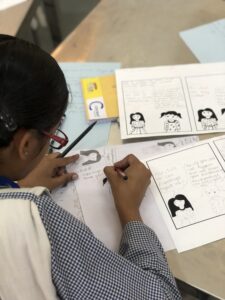
entities still dominate science communication in India and are the primary funders of science communication programs. To truly amplify the Indian voice of science, we need more private and non-governmental entities to contribute to science communication and support its growth. Otherwise, the voices that we keep hearing are the voices that the government wants everyone to hear. While progress has been made, there is still a need for more diverse and independent voices in the science communication landscape.
In your article, you also mentioned the challenge of language diversity in India. Do you think scientists should communicate in their own language or in a globally understood language?
This is a question that we are constantly asking ourselves. The language diversity in India presents a complex challenge. There have been “Superheroes Against Superbugs” workshops that we have organised in three languages. With numerous languages spoken across the country, it is not feasible to stick to just one. But it’s hard because a lot of us are trained in English, especially regarding our scientific education. Translating these scientific concepts into our languages is quite difficult, because you can translate the word, but not the essence and the spirit of it. For example, while ‘antimicrobial resistance’ could be translated into Hindi, an Indian language, it might get too technical and unwieldy. As bugs are more commonly used in common parlance, it would make more sense to translate ’superbugs‘ to help non-science audiences. Many science communicators are exploring the use of regional languages to make science more accessible. Translating scientific concepts accurately while maintaining cultural relevance is crucial. However, this requires significant effort and resources, as it goes beyond simple translation and requires adapting concepts to be culturally relevant and understandable.
What do you see as the advantages of communicating in regional languages?
The most significant advantage of communicating in regional languages is inclusivity. By communicating in languages that people understand and feel comfortable with, we can reach a
wider audience. Many individuals, particularly those from marginalized communities, may be excluded from scientific discussions due to language barriers and the overall elitist nature of science. Communicating in regional languages allows them to participate more meaningfully in science and understand its relevance to their lives. It shifts the focus from scientists telling the public what is important to enabling individuals to think for themselves, engage with science, and contribute to the conversation based on their own understanding.
What do you think scientists in India need to communicate more effectively?
Scientists need training in science communication, and this training should be integrated into their scientific education. By providing scientists with communication skills during their training, they can develop the necessary tools to engage with the public and effectively convey complex ideas. It is also essential to institutionalise science communication and allocate resources and infrastructure for communication initiatives. Currently, science communication often receives lip service without substantial support. Shifting the culture and mindset around scientists‘ role in public engagement and recognizing the importance of science communication as an integral part of scientific work can further support scientists in their communication endeavors.


